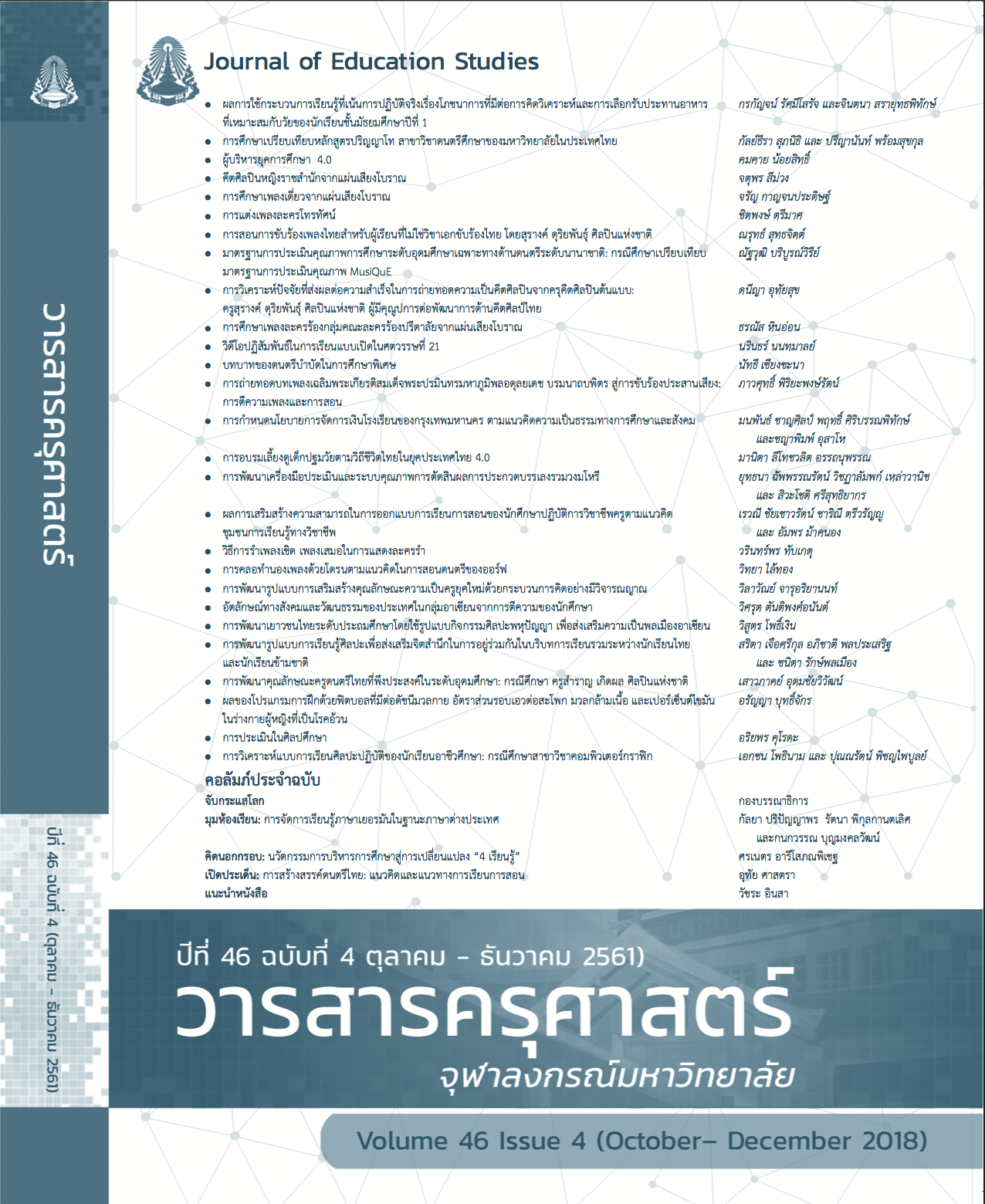วิธีการรำเพลงเชิด เพลงเสมอในการแสดงละครรำ
Keywords:
DANCE PROCESS, CHEUD DANCES, SAMER DANCES, DANCE-DRAMA PERFORMANCEAbstract
This research objectives were to: (1) study the history, roles, and importance of the dance process; (2) study the way of dancing and the relationship between Cheud and Samer dances in lessons. This research was qualitative research. The informantion givers be 8 teachers who pass on knowledge of dance postures, 70 students, including Thailand National Artists, specialists and teachers in the Bunditpatanasilapa Institute and the Office of Music and Drama. The tools for studying were questionnaires and observation forms. Contents analysis and body movement practising.
The findings found that: (1) there were Cheud and Samer dances since the Ayudhaya era. Rheir role in Khon and drama teachers was to pay respect to custom. The objective of Cheud dance was for receiving and sending teachers, which was different from Samer dance. Also, in dance-drama performance, Cheud and Samer dances were found in journeys of all stories. Hence this is important to contain in curriculum for Thai Drama class. (2) Relationship of dancing in lessons and in dance-drama performance, Cheud dance in lessons belong to the journey of zigzag dancing and dance-drama performance taking in four meanings: (1) long journey in zigzag running dance; (2) move the troops running like moving troops; (3) fighting the war only taking the rhythm for dancing; (4) dancing as the pair for chasing. Same dance in lessons is the near journey emphasis of step up and down dance as the rhythm of Na Tab Mai Duen 5 and Mai La 4. Also, the dance-drama performance only adjusts the dance postures or dimensions of dancing as per the role in performance. The melody and rhythm of Cheud is a specific pattern for dancers but can adjust for as short or as long as appropriate dancing. For Samer dances the fixed pattern in dancing cannot change.




